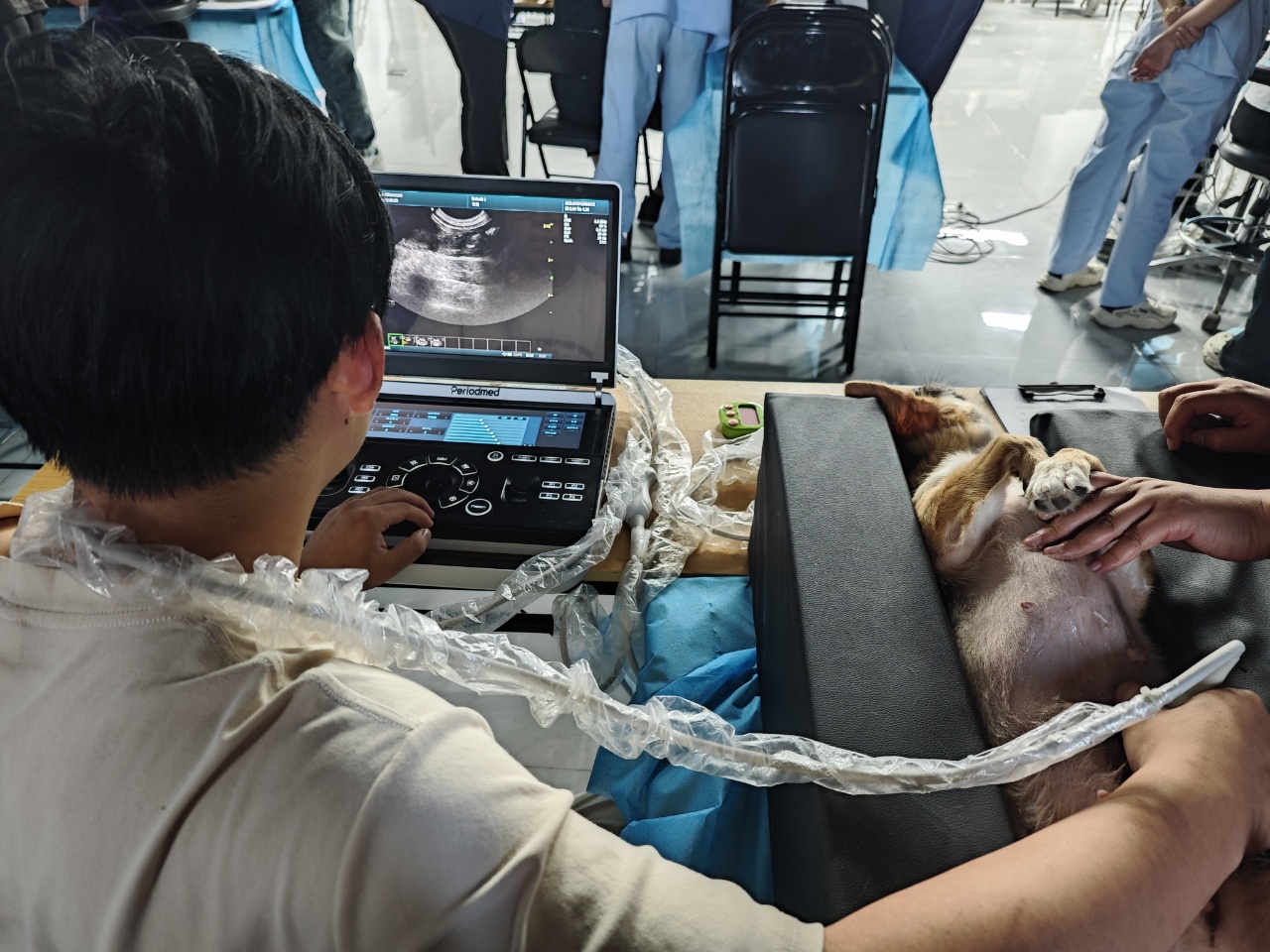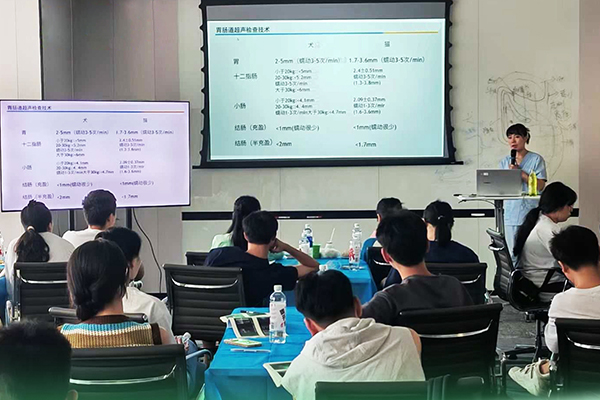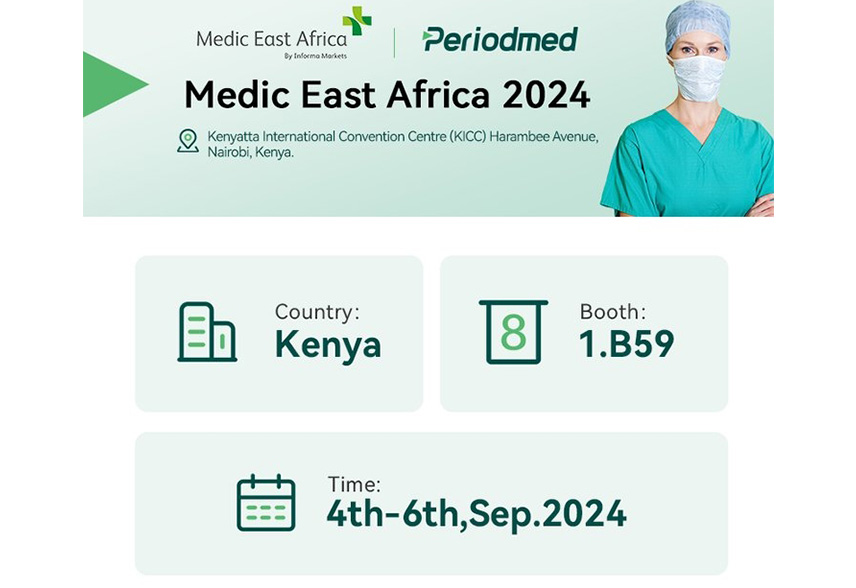Periodmed Hosted Animal Abdominal Ultrasound Training 2025
In pet healthcare,abdominal ultrasoundis an indispensable non-invasive diagnostic tool, directly influencing veterinarians’ assessment of dogs, cats, and other pets’ health. To empower professionals, Periodmed Medical recently hosted an Basic Clinical Training on Animal Abdominal Ultrasound, aiming to bridge theory-practice gaps and enhance pet care standards. Below is a breakdown of the training and its significance.
Theory First: Laying a Solid Foundation for Clinical Practice
Periodmed’s training started with core theoretical knowledges: ultrasound equipment principles and abdominal organ examination key points—ensuring participants understood both "how" and "why" of operations.
A highlight was the in-depth explanation of Periodmed’s flagship devices:Revo 9 VETandRevo T2 VET. Trainers focused on practical knowledge likeprobe selection(high-frequency for small breeds, low-frequency for large ones) andparameter adjustment(tweaking gain, depth, focus for pets with challenging body types).
What distinguished the theory segment was itsclinical relevance. Using real case studies, trainers detailed scanning methods for key organs (liver, gallbladder, spleen, pancreas, kidneys, bladder): e.g., following the portal vein for liver scans, focusing on splenic hilum blood vessels for spleen checks. These explanations turned abstract theory into actionable skills.

Hands-On Practice: Turning Knowledge into Skill
Practical experiencewas the training’s core. Trainers guided participants step-by-step, from proper probe grip (relaxed to avoid fatigue, steady pressure) and pet positioning (e.g., small dogs on backs, nervous cats supported by towels) to finding optimal scanning planes.
Participants scanned real animals (under ethical guidelines), learning to observe key indicators: uniform liver echoes, smooth pear-shaped gallbladder, and distinct kidney cortex-medulla layers. A key exercise wascomparing normal/abnormal images(e.g., healthy vs. uneven-echo kidneys, normal vs. sludge-filled gallbladders), with trainers linking visual cues to potential causes.
By the two-day training’s end, even beginners could independently scan common abdominal organs. A rural clinic vet noted:“I used to wait days for external ultrasound reports; now I can do in-house scans for faster answers.”
Equipment as a Partner: How Revo T2 VET Boosts Efficiency
Periodmed’sRevo T2 VETproved pivotal in the training, with features that streamlined workflows and improved accuracy:
PACS compatibility: Enables fast data transfer, simplifying image storage, access, and sharing for consistent pet care across clinics.High-resolution imaging: Captures small early lesions (e.g., renal damage signs, pancreatic inflammation) that lower-quality devices miss.Pet-specific optimization modes: “Small animal mode” auto-adjusts parameters, reducing manual tweaks and helping new users focus on image interpretation—popular with small-clinic staff.


As a trainer said:“The Revo T2 VET isn’t just a tool; it’s a partner for better care.”
Leading the Way: Specialization and Innovation with Revo 9 VET and T2 VET
While focusing on basic abdominal ultrasound, the training showcased Periodmed’s commitment tospecialization and innovation. BothRevo 9 VETandRevo T2 VETintegrate cutting-edge tech, intelligent platforms, and user-friendly features.
Their key strength isversatility: equipped with pet-specific modules and multi-size probes, they suit diverse scenarios—small animal hospitals, exotic pet research institutions, and large-scale farms. For example, Revo 9 VET’s high-frame-rate imaging monitors kidney blood flow, while its high-resolution mode examines delicate exotic pet abdominal structures. This meets the diverse needs of modern pet healthcare.
A Rewarding Journey: Learning, Sharing, and Growing Together
After two days of intensive theory, practice, and discussions, the training concluded—leaving participants with new skills, connections, and renewed passion.
Tangible impacts included: 90% planned to use abdominal ultrasound in daily practice within a month; 85% could identify at least three common abdominal abnormalities. Beyond skills, the training was acollaboration platform: veterinarians from urban/rural, large/small clinics shared experiences, fostering a supportive community.
For Periodmed, the training advanced its goal of improving global pet healthcare outcomes. One participant noted:“This taught me to be a better vet—catching issues earlier, easing owners’ worries, and helping pets live healthier.”
Looking Ahead: The Future of Pet Healthcare
As pet healthcare evolves, abdominal ultrasound will grow in importance. Periodmed’s training sets a new standard for veterinary professional development by combining theory-practice, prioritizing user-friendly equipment, and encouraging collaboration.
For pet owners, this means better care for their companions; for vets, more confidence and impact; for the industry, a more accessible, accurate, and compassionate future. Ultimately, the training centered on the love between pets and owners—ensuring vets with right tools/knowledge give pets better chances at long, healthy lives.

















 EN
EN CN
CN


